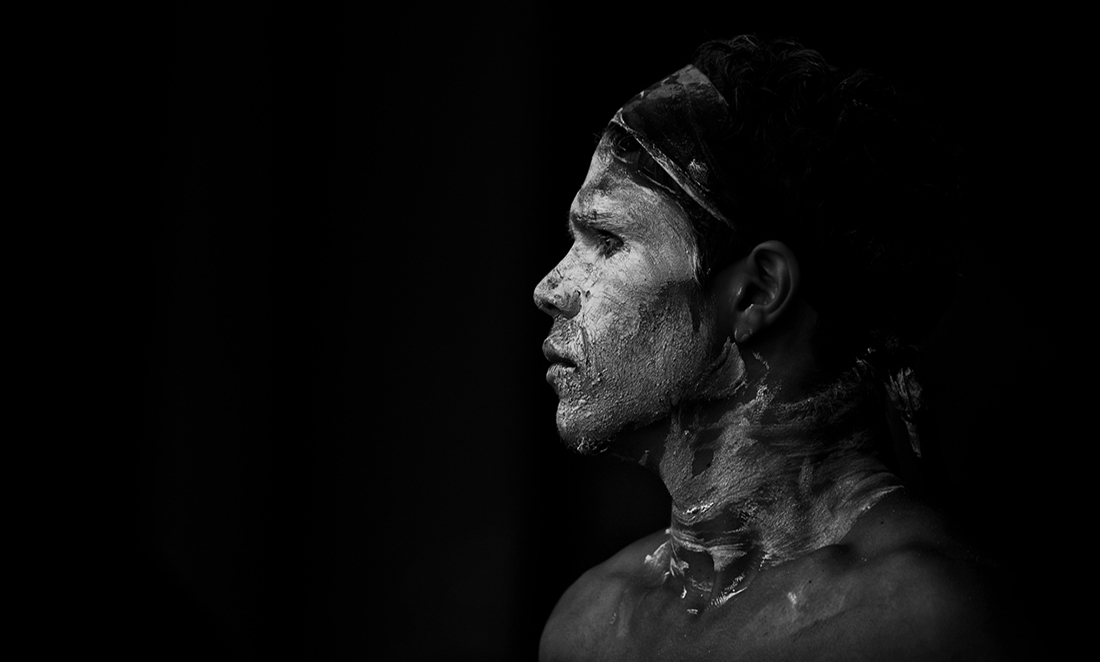Aboriginal Australians are almost three times more likely to have a stroke than non-Aboriginal Australians.
They are also 21 times more likely to suffer a head injury due to an assault.
Despite this, Aboriginal Australians are under-represented in long-term rehabilitation services. This fuels, and is fuelled by, a massive lack of communication.
This miscommunication has left Aboriginal brain injury survivors without the help they need. While families support their relatives as best they can, brain injury survivors can often become isolated, sometimes having to live away from their communities or live in aged care facilities where no one speaks their language.
Now, the once absent voices of Aboriginal brain injury survivors are informing a unique rehabilitation trial in WA.
BRAIN BLEEDS AND BUMPS
A brain injury is any damage to brain tissue.
It can come in the form of a stroke (which blocks the supply of oxygen to brain cells) or can occur in a physical impact such as a car crash, fall or blow to the head.
The effects of brain injuries are many and varied. Survivors may suffer physical, cognitive, emotional and behavioural impairments. These disabilities may be mild or crippling. Every individual’s experience is unique. However, speech disorders are a very common side effect.
Beth Armstrong, Professor of Speech Pathology at ECU says, “The way you communicate, if that changes, it can change you as a person.”
This can have a devastating impact on brain injury survivors.
LANGUAGE IS NOT LOST
Thanks to the plastic nature of the human brain, communication skills can be relearned. In the same way adults can learn a foreign language, rehabilitation therapy allows people to retrain their brain.
Rehabilitation can also help people improve physically, relearn behavioural skills and improve cognition.
Unfortunately, rehabilitation is not a quick fix. Much like learning a new language, it takes time and diligence. Rehabilitation can also be very stressful. It takes a toll on individuals, friends and family.
Despite Aboriginal people suffering such high rates of brain injury, access to ongoing rehabilitation is rare. Without such therapy, they may be suffering, disabled and alone. A distressing thought—made worse by knowing that their condition can be helped with the right treatment.
MISSING VOICES BUSTS MYTHS
The absence of Aboriginal people in rehabilitation services has often led largely non-Aboriginal practitioners to assume they did not want therapy.
They assumed other illnesses were a priority or that Aboriginal people as a community were more adept at dealing with these hardships.
A 3-year investigation called Missing Voices debunked these myths.
By seeking an indigenous perspective, researchers found that Aboriginal Australians wanted more—more education, more information and more services along their rehab journey.
After learning about the detrimental issues at play, project lead Beth felt there were lots of avenues for improving the situation.
Now, she is spearheading research that trials a culturally secure approach to rehabilitation.
ENHANCING REHABILITATION SERVICES
Cultural security training and Aboriginal coordinators will be key in improving rehabilitation services.
Beth embarks on the WA-wide project with a number of partners.
Funding will take the clinical trial through until 2021, and it will encompass two parts.
Part 1
First, Aboriginal brain injury coordinators will be employed to work with brain injury survivors and their families.
Coordinators will be health workers or nurses who are Aboriginal. They will come into the hospital and meet the person and their family at the time of the injury. In the following 6 months, they will be in a position to offer them information, provide advocacy and liaise with health services.
Similar positions exist in other aspects of health, but there is currently nothing in Australia for brain injury.
Part 2
At eight participating sites, hospital staff who treat brain injury will receive cultural security training.
This training will encourage the staff to explain things in a way that’s more in line with Aboriginal concepts of health and wellbeing.
They will learn to communicate the different rehabilitation options that are available. There is no one ‘best rehabilitation practice’ that applies to everyone. It depends on the individual, their community and the injury itself.
TRIALS AND DIFFICULTIES
Recruiting for research can often be a challenge.
Brain injuries are traumatic and life changing. Individuals who have just suffered one may be resistant to being recruited for a trial.
This is a difficulty that must be overcome. Without clinical trials, we will continue to have insufficient understanding of what rehabilitation works best.
Recruiting people to the trial will come back to communicating the importance of rehabilitation, providing the help people need to see it through and conveying the contribution they are making to future service planning.
Only then can we begin to improve rehabilitation—for all Australians.








